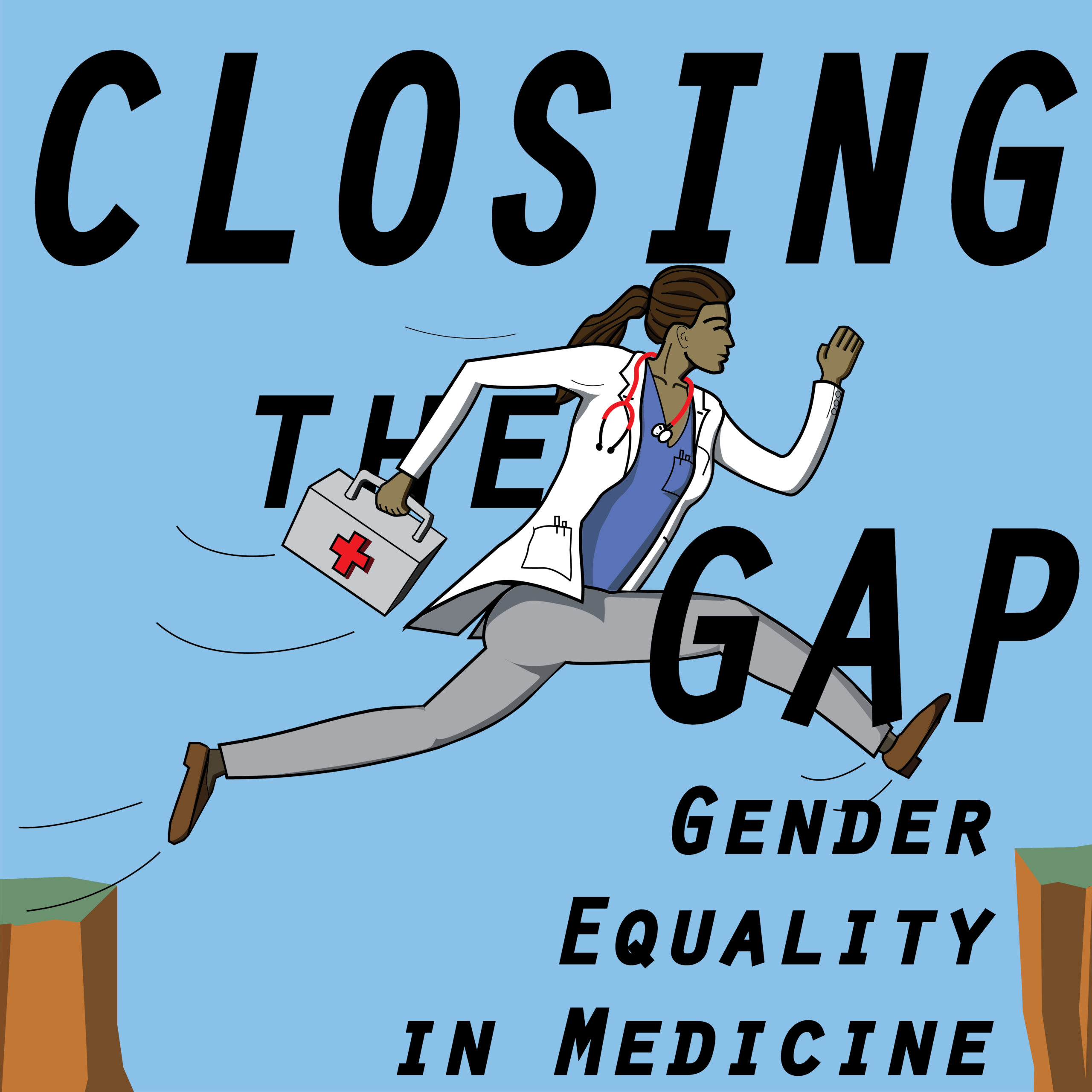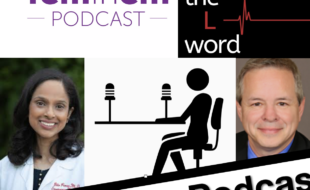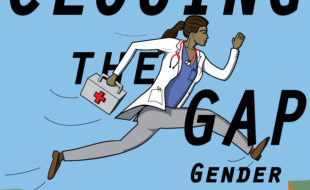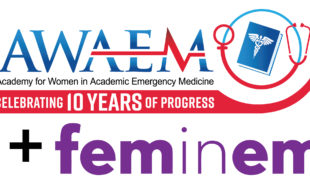Disclaimer: The view(s) expressed herein are those of the author(s) and do not reflect the official policy or position of Brooke Army Medical Center, the Department of the Air Force, the Department of Defense or its components.
Goals:
- Season 1 is coming to a close!
- Discuss how gender bias can adversely affect patients
- Hear a patient’s perspective on treating chronic illness
Show guest:
Teresa Y. Smith, MD, MSEd, FACEP
Gender bias is affecting patient care
- New England Journal of Medicine study showed women were 7 times as likely to be misdiagnosed and discharged while actively have a myocardial infarction1
- Women are still less likely to receive appropriate care in the emergency department despite standardization with TIMI scores, EKGs, presenting complaints2
- Prior to 1990 the majority of studies were performed only on men, which has skewed the treatments to be primarily established for men and subsequently generalized to women, which may ultimately be detrimental to their health3
- Women are more likely to wait longer for analgesia in the emergency department than men—average of 65 minutes vs 49 minutes4
- Women with pain are more likely to receive antidepressants or sedatives for analgesia compared to men5
- Women are delayed in being diagnosed with chronic illness, tuberculosis, sleep apnea, and many types of cancer when compared to men.6,7,8
- Race, sexuality, disability and socioeconomics biases are also present. Gender has the strongest correlation to delays in diagnosis and treatment9
- Biases can be synergistic, leading to even worse discrimination and patient care for women of color and other under-represented groups9
Teresa Y. Smith Interview
- In additional to being a physician, she has had extensive experience as a patient
- Has been discriminated both because of her race and gender, but feels partially insulated because of her status as a medical student/resident/attending
- Personal choice to forgo steroids led to interaction with medical staff dismissing her opinions and discussing treatments with her father despite her being both the patient and a physician
- Needed to be own advocate and was fortunate to have medical knowledge empowered by her family
- Treatment for patients extends beyond the textbook; they’re individualized and vary depending on patient’s goals
- Best physicians that she’s had have given her time and listen
- Delivering bad news or important instructions are best given in small alloquots
- Understanding Fear
- Dr. Smith has left AMA with pneumonia and a pneumothorax because of fear. If an attending will react this way, it’s understandable to have patients with no medical knowledge to do the same, if not more extreme
- Important to ask why a patient is in the ER rather that getting frustrated as they typically don’t have the medical vocabulary nor knowledge to understand what’s an emergency.
- They’re in the ER because they think they have an emergency.
- Mentorship was frequently disappointing. Was repeatedly shut down because of her chronic disease and advised to either quit or pursue another specialty.
- Now as program director, Dr. Smith, attempts to teach all residents that it is ok to be vulnerable. Hopefully will ultimately provide a healthier residency life and be open about ongoing struggles
- Dr. Smith’s Through the Eyes of a Patient introduction and video from FIX18
Dr. Choo and wrap-up
- Improving the gender gap can improve patient outcomes
- More working women in emergency departments led to increase in survival for MI patients regardless of taken care of by female or male physicians10
- Season 2 and Season 3 to come!
References
- Nabel, Elizabeth G. “Coronary Heart Disease in Women – An Ounce of Prevention | NEJM.” New England Journal of Medicine, 24 Aug. 2000, nejm.org/doi/pdf/10.1056/NEJM200008243430809.
- Chang, Anna Marie, et al. “Gender Bias in Cardiovascular Testing Persists after Adjustment for Presenting Characteristics and Cardiac Risk.” Academic Emergency Medicine : Official Journal of the Society for Academic Emergency Medicine, U.S. National Library of Medicine, July 2007, ncbi.nlm.nih.gov/pubmed/17538080.
- McMurray, Richard J. “Gender Disparities in Clinical Decision Making.” JAMA, American Medical Association, 24 July 1991, jamanetwork.com/journals/jama/article-abstract/386621.
- Chen, Esther H, et al. “Gender Disparity in Analgesic Treatment of Emergency Department Patients with Acute Abdominal Pain.” Academic Emergency Medicine : Official Journal of the Society for Academic Emergency Medicine, U.S. National Library of Medicine, May 2008, ncbi.nlm.nih.gov/pubmed/18439195.
- Hoffmann, Diane E., and Anita J. Tarzian. “The Girl Who Cried Pain: A Bias Against Women in the Treatment of Pain.” SSRN, 27 Feb. 2003, papers.ssrn.com/sol3/papers.cfm?abstract_id=383803.
- Din, Nafees U., et al. “Age and Gender Variations in Cancer Diagnostic Intervals in 15 Cancers: Analysis of Data from the UK Clinical Practice Research Datalink.” PLOS ONE, Public Library of Science, 15 May 2015, journals.plos.org/plosone/article?id=10.1371%2Fjournal.pone.0127717.
- Lyratzopoulos, Georgios, et al. “Gender Inequalities in the Promptness of Diagnosis of Bladder and Renal Cancer after Symptomatic Presentation: Evidence from Secondary Analysis of an English Primary Care Audit Survey.” BMJ Open, British Medical Journal Publishing Group, 1 June 2013, bmjopen.bmj.com/content/3/6/e002861.
- Karim, Fazlul, et al. “Gender Differences in Delays in Diagnosis and Treatment of Tuberculosis.” OUP Academic, Oxford University Press, 1 Sept. 2007, academic.oup.com/heapol/article/22/5/329/558808.
- Arber, Sara, et al. “Patient Characteristics and Inequalities in Doctors’ Diagnostic and Management Strategies Relating to CHD: A Video-Simulation Experiment.” Social Science & Medicine, Pergamon, 5 July 2005, www.sciencedirect.com/science/article/abs/pii/S0277953605002443?via%3Dihub.
- Greenwood, Brad N., et al. “Patient–Physician Gender Concordance and Increased Mortality among Female Heart Attack Patients.” PNAS, National Academy of Sciences, 21 Aug. 2018, www.pnas.org/content/115/34/8569.
Podcast: Play in new window | Download












Very Good information.